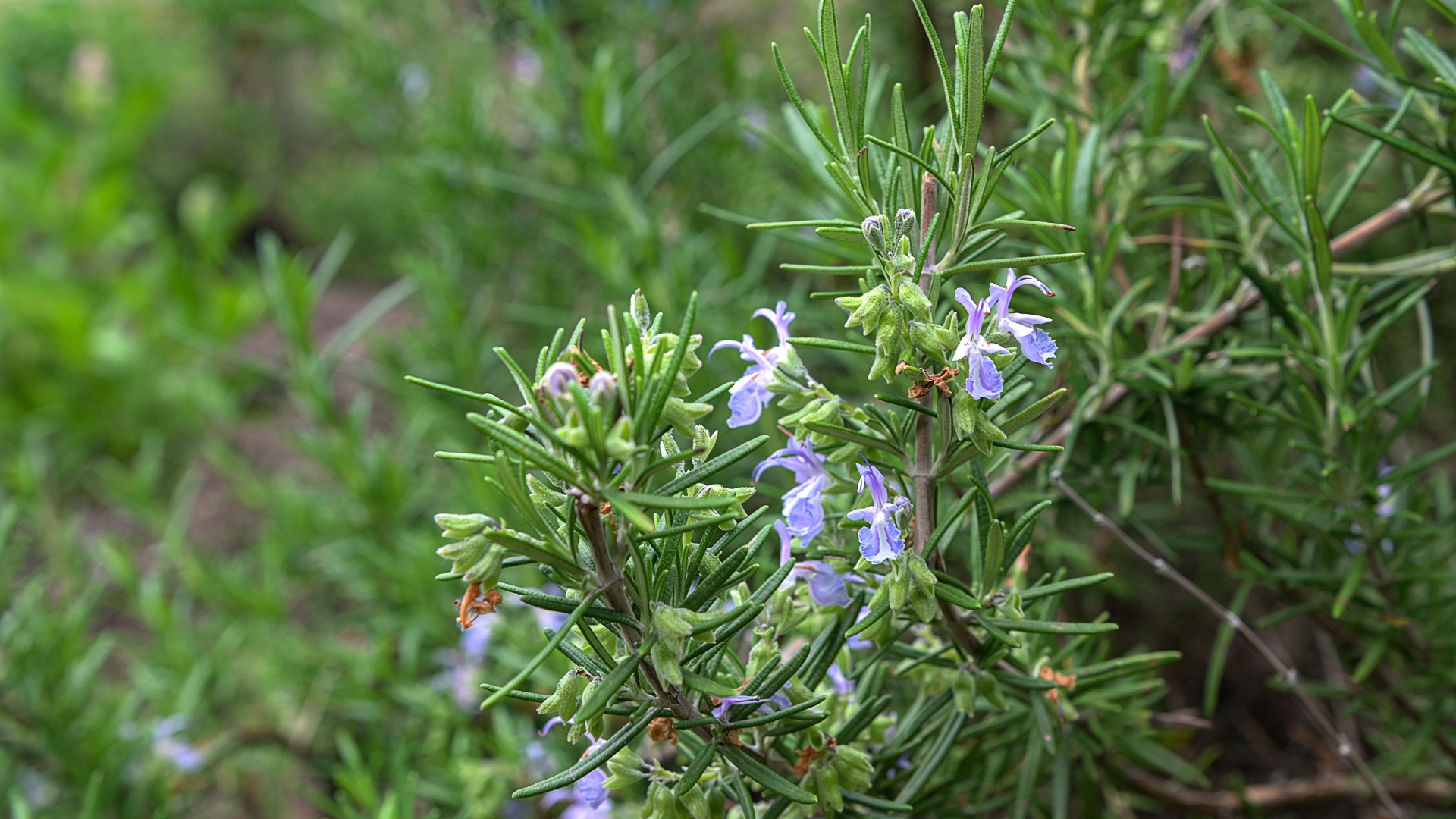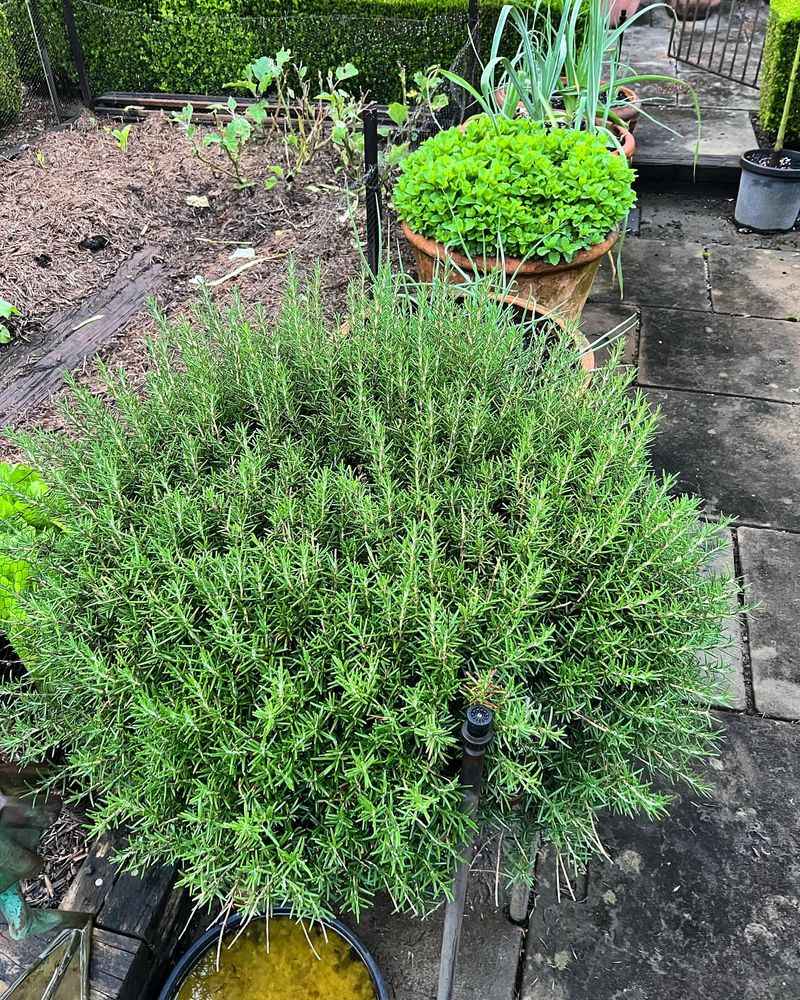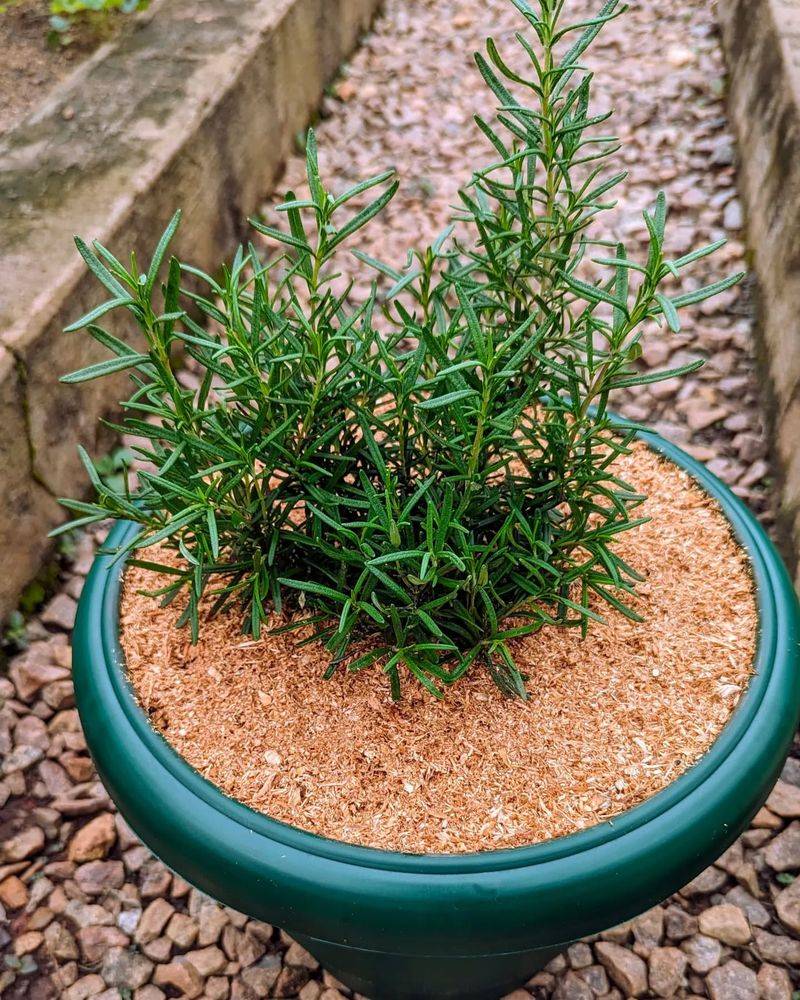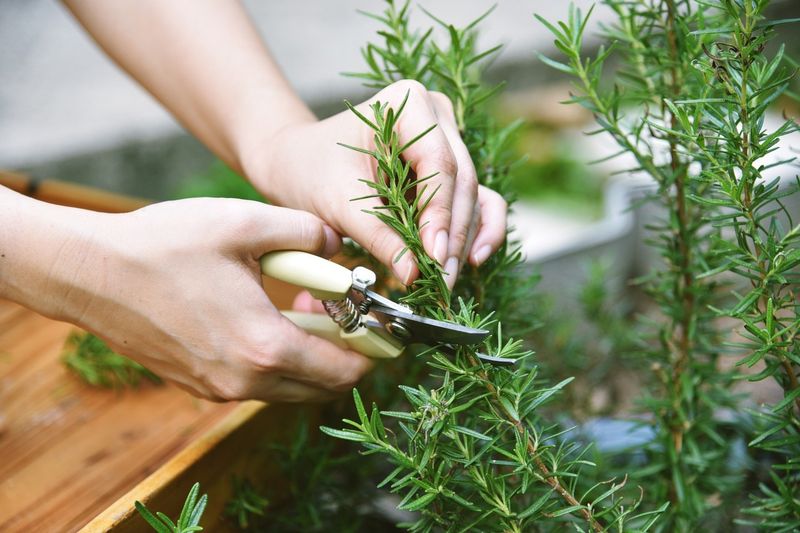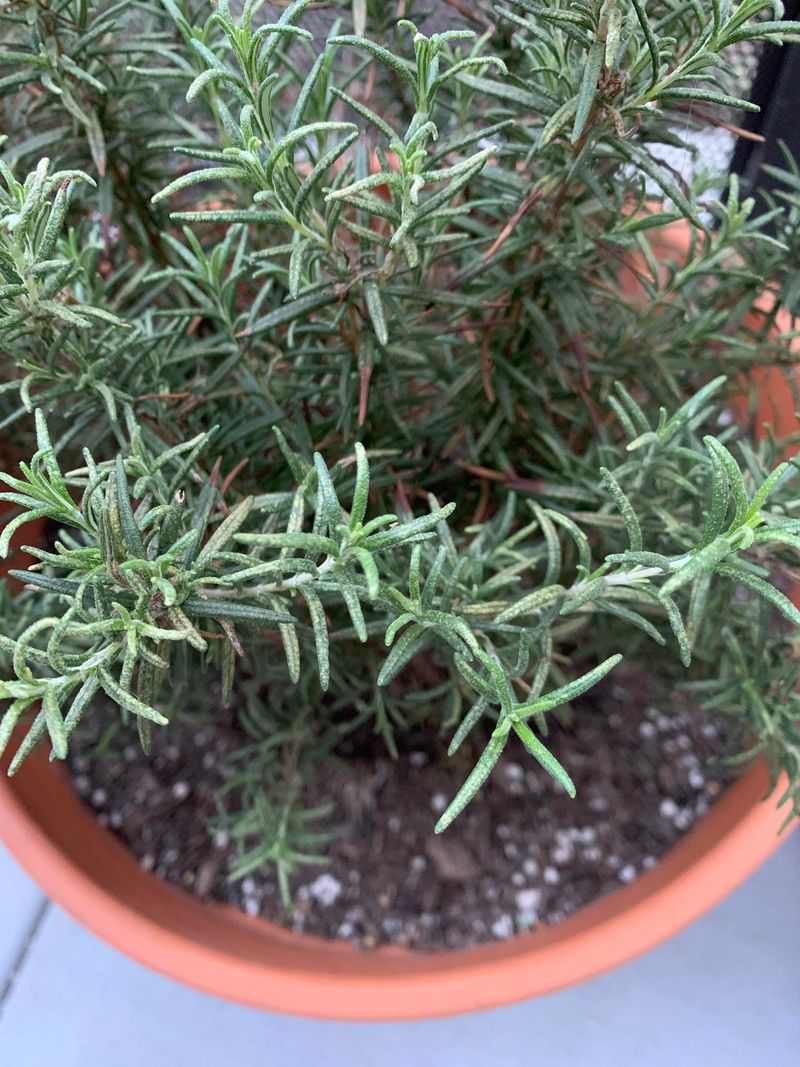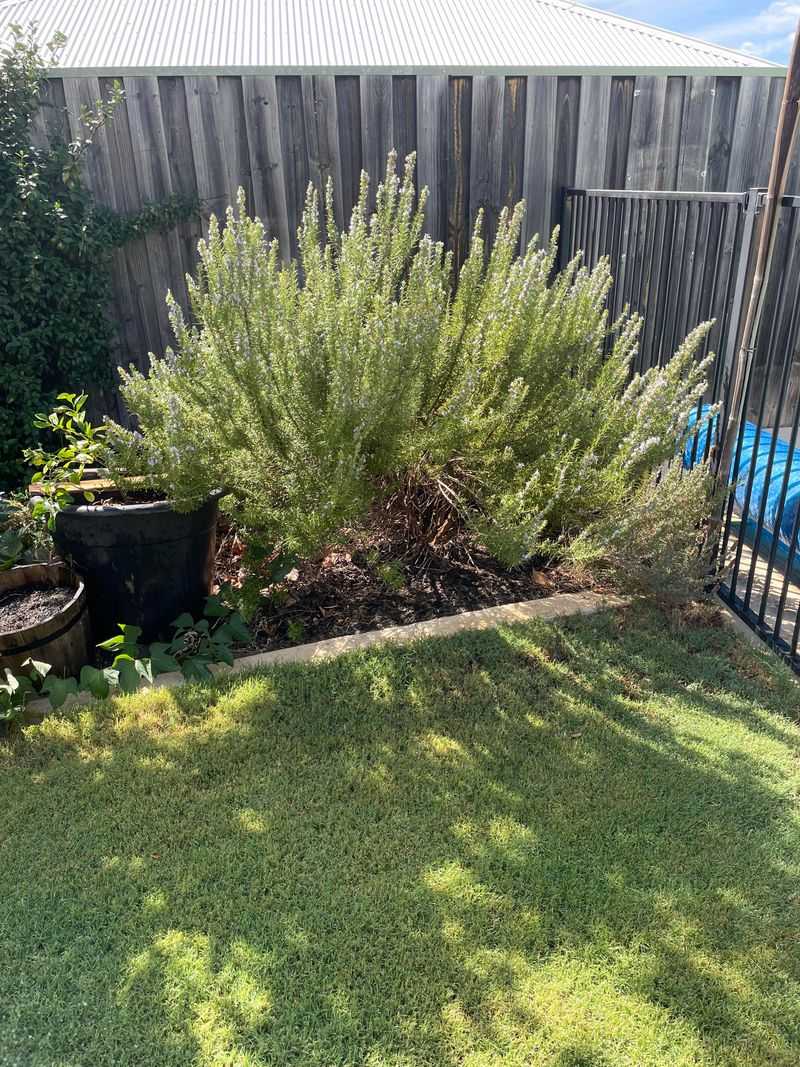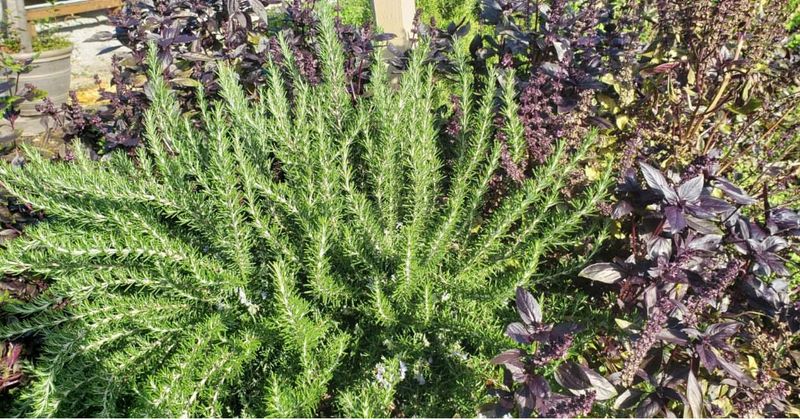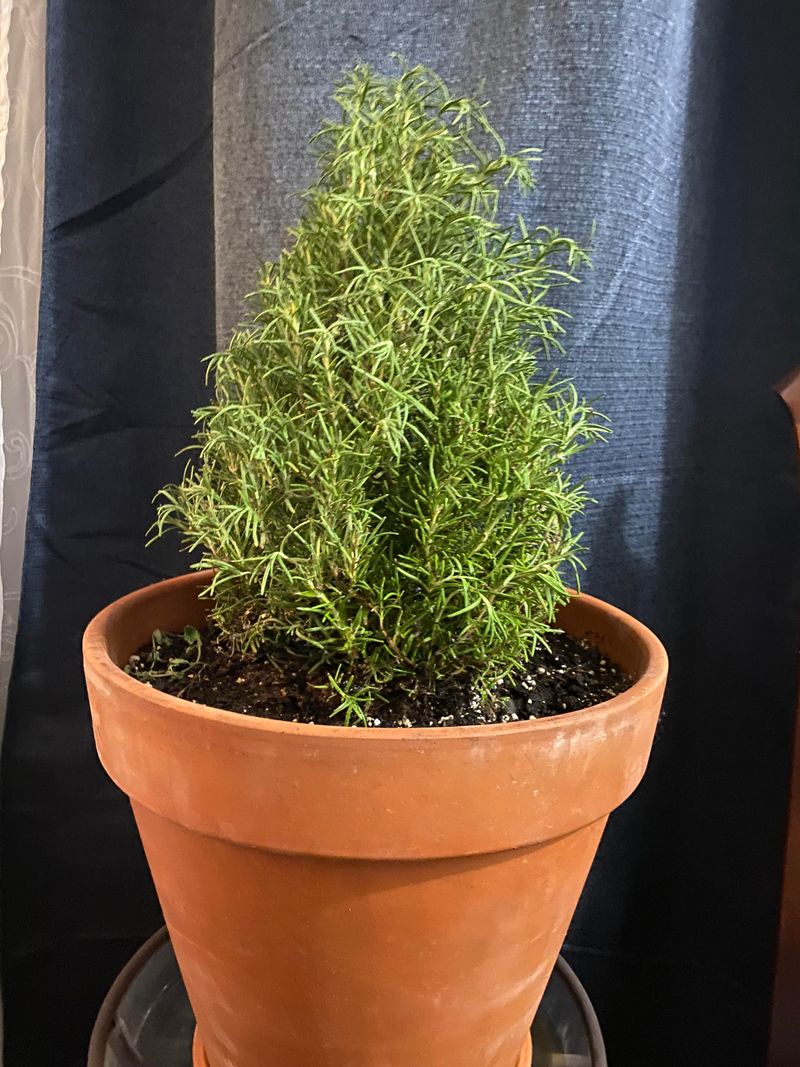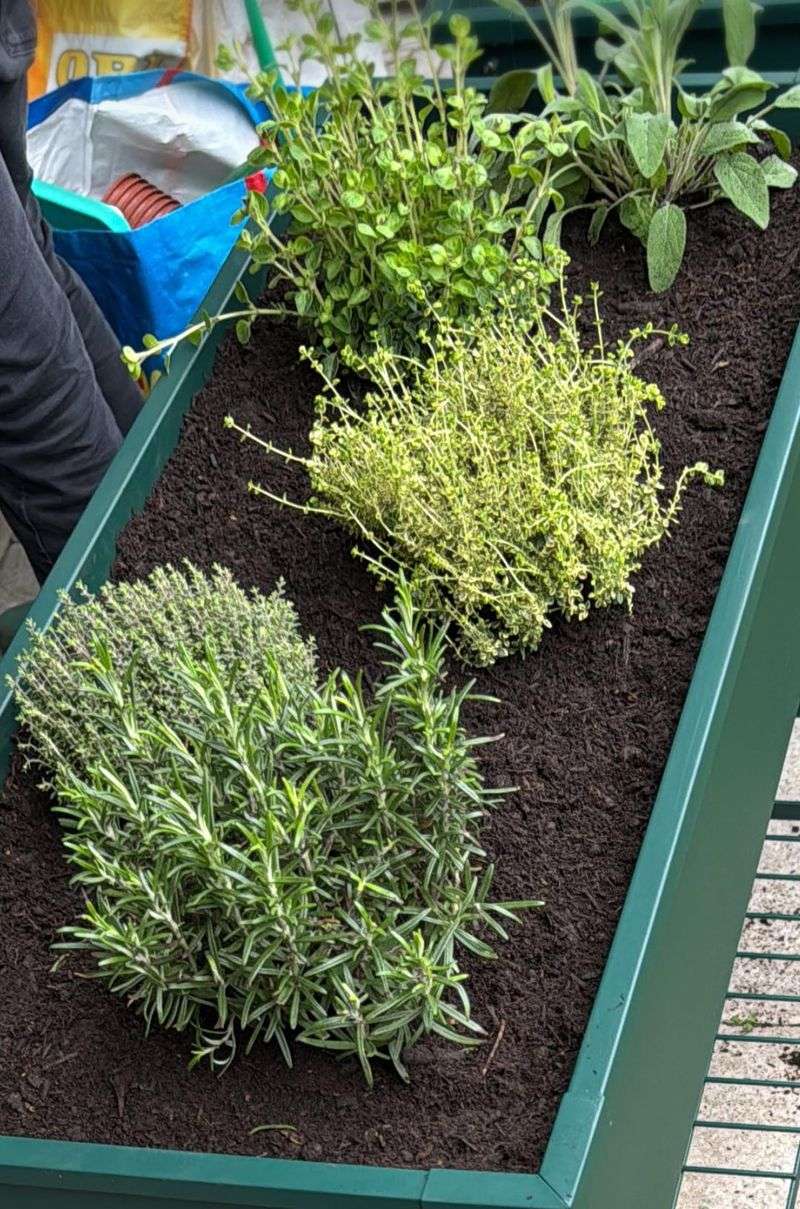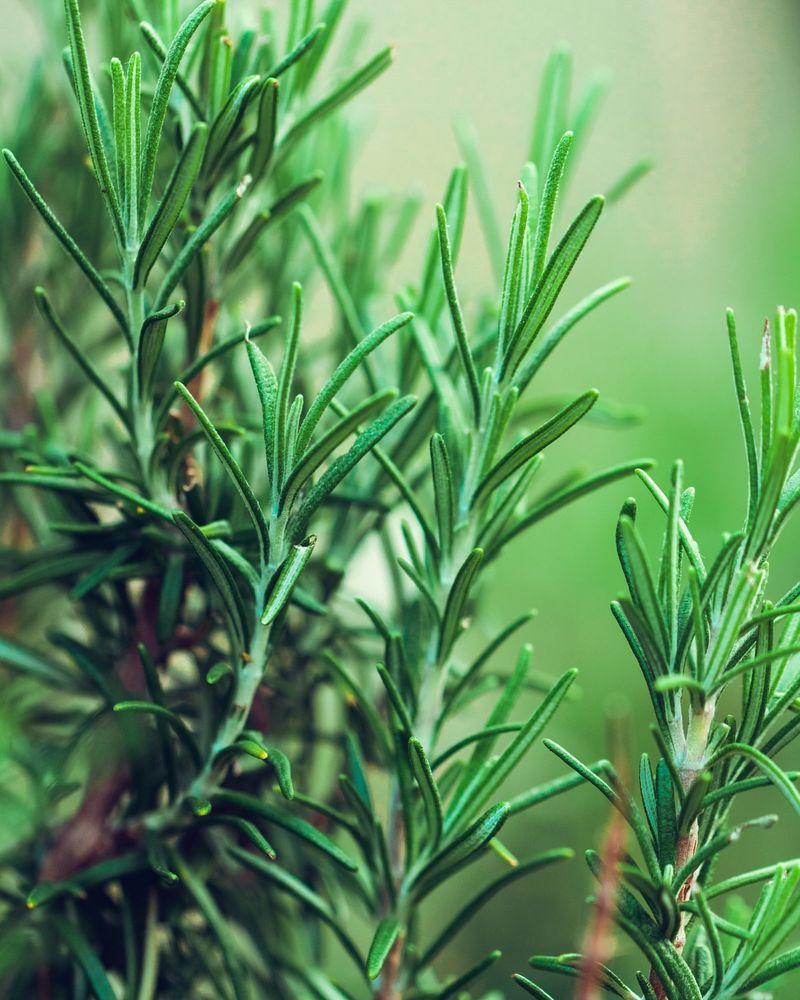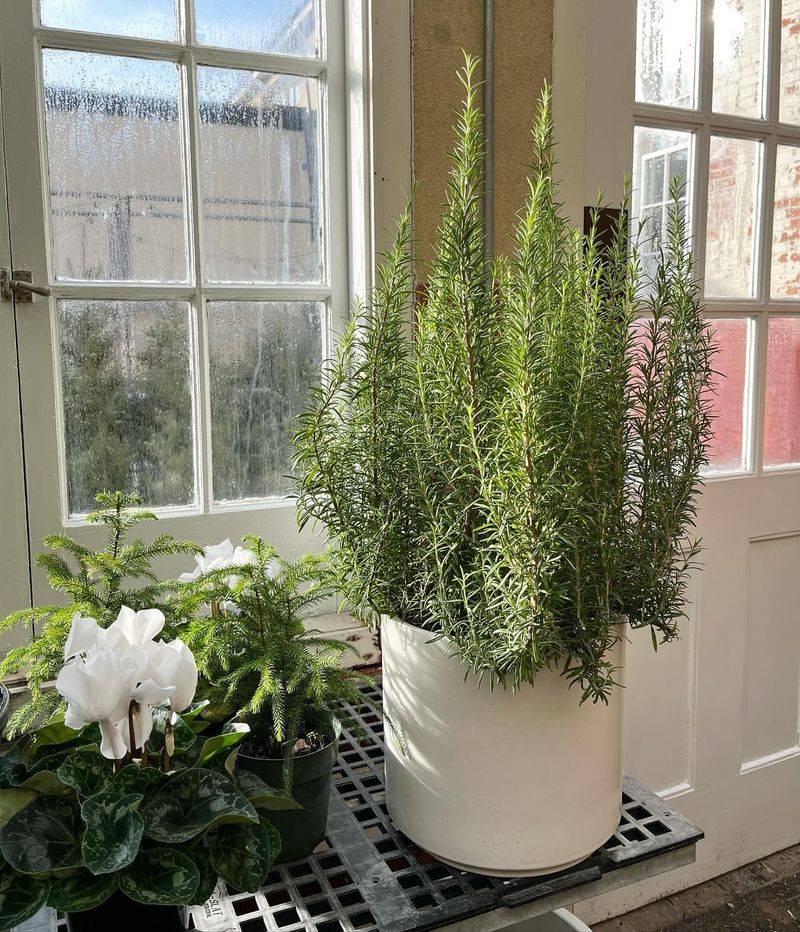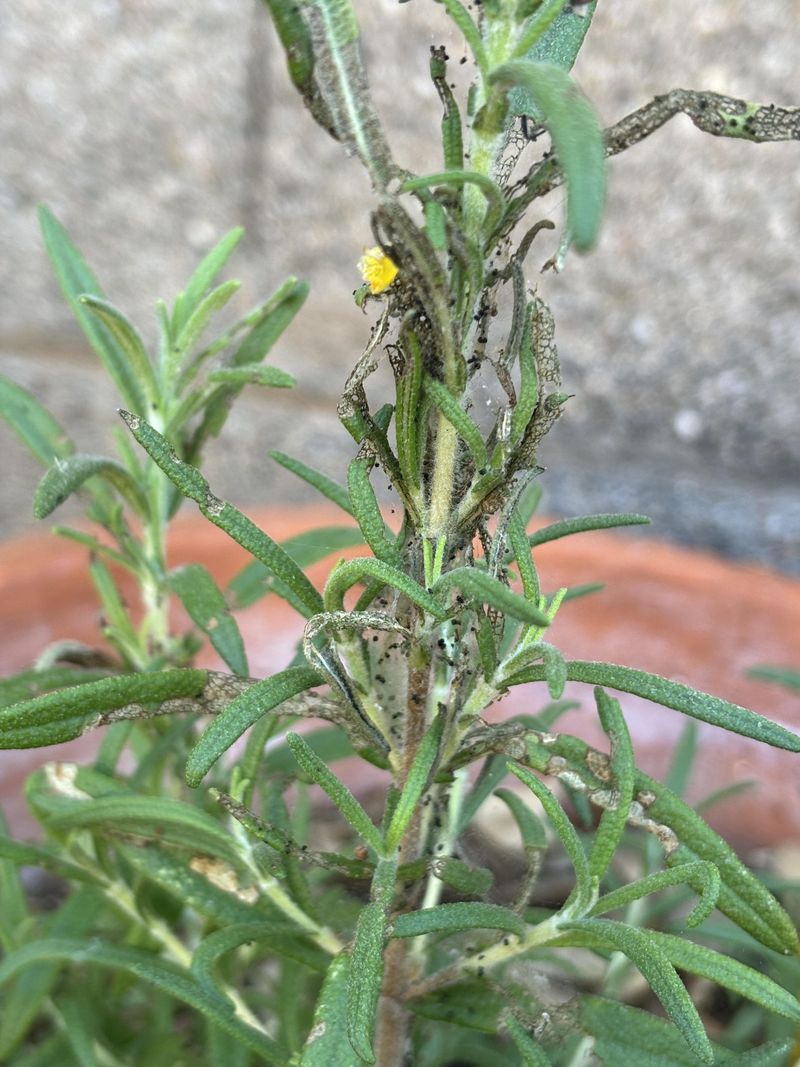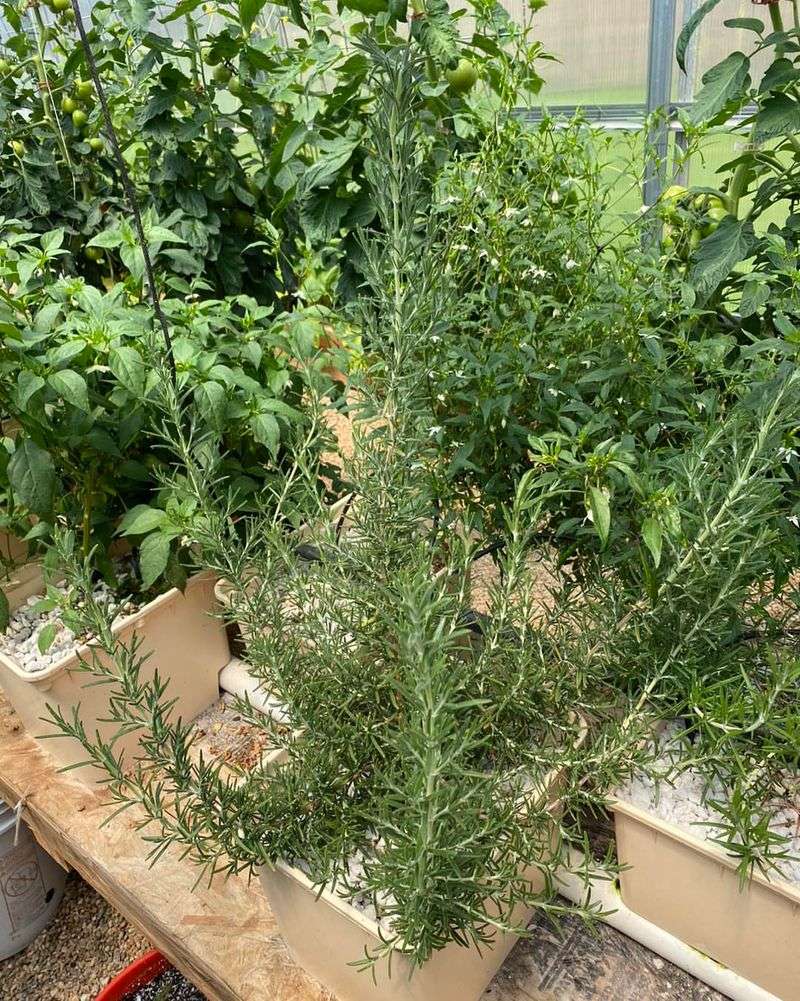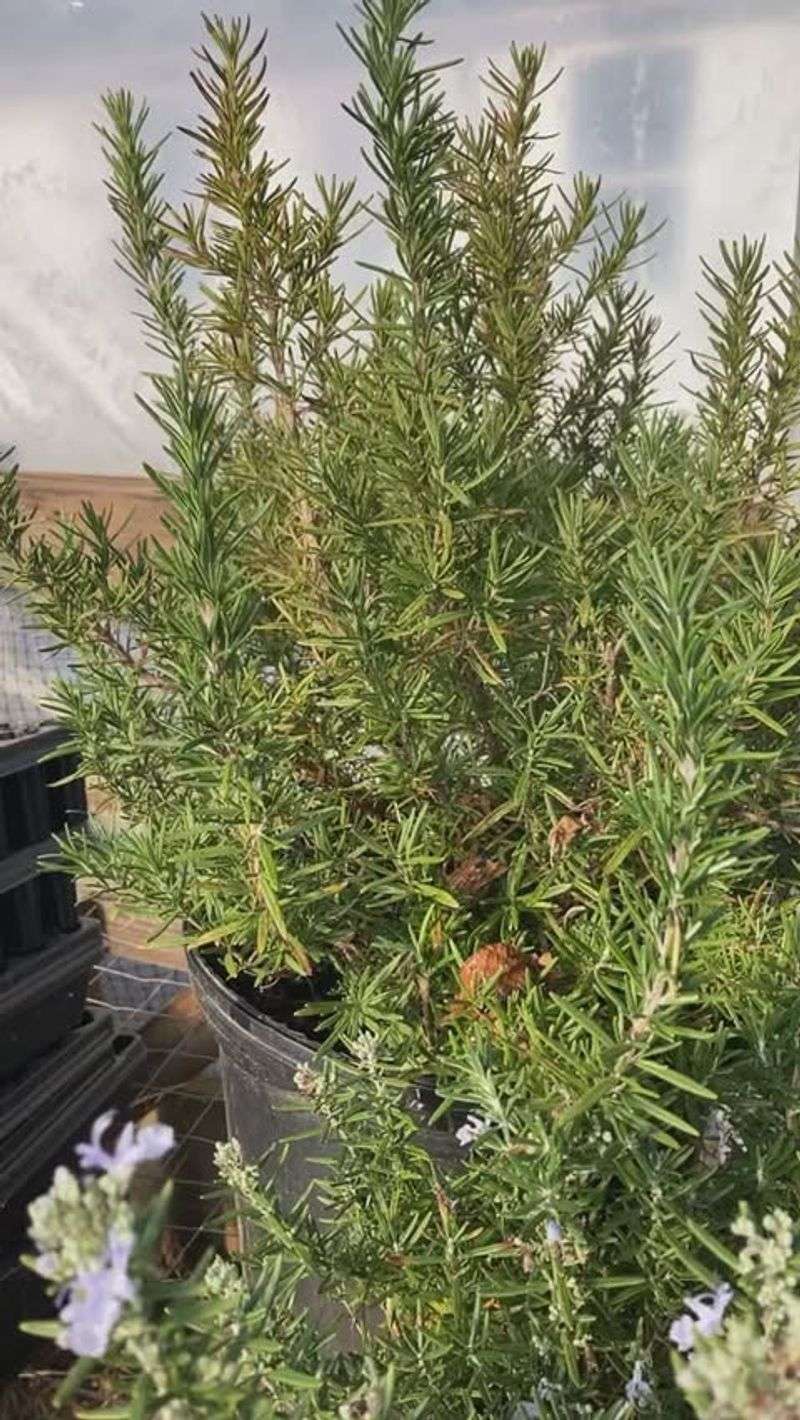Rosemary is one of those herbs that rewards you big-time when you treat it right. I’ve learned a few tricks over the years to keep mine going strong through the hottest months.
These tips help it stay lush, full of flavor, and totally stress-free. If you’ve ever had rosemary turn woody or sad mid-summer, this one’s for you.
Let’s keep those stems sturdy and the scent amazing all season long!
1. Choose The Right Location
Full sun exposure is what rosemary craves most. Place your plants where they’ll receive at least 6-8 hours of direct sunlight daily, preferably with morning sun.
Southern or western exposures typically work best in most gardens. Remember that insufficient light leads to leggy growth and reduced flavor intensity in the leaves.
2. Plant In Well-Draining Soil
Sandy, rocky soil mimics rosemary’s native Mediterranean habitat and prevents root rot. Mix regular potting soil with coarse sand or perlite if your garden has heavy clay.
Good drainage is absolutely crucial since rosemary hates wet feet. Consider raised beds or container planting if your soil tends to stay soggy after rain.
3. Water Properly
Less is more when watering rosemary during summer months. Allow the soil to dry out completely between waterings, then water deeply but infrequently to encourage deep root growth.
Morning watering is ideal to prevent fungal problems. A good rule of thumb: if the top two inches of soil feel dry to the touch, it’s time to water.
4. Avoid Overhead Watering
Wet foliage creates perfect conditions for powdery mildew and other fungal diseases. Water at the base of the plant instead, keeping the aromatic leaves dry and healthy.
Drip irrigation or soaker hoses work wonderfully for rosemary. If you must use a watering can, aim carefully at soil level to minimize moisture on the foliage.
5. Mulch Strategically
A layer of light-colored gravel or white stone mulch reflects sunlight and creates the hot, arid conditions rosemary loves. Unlike organic mulches, stone won’t retain excess moisture against the stems.
Keep mulch at least an inch away from the plant’s base to prevent stem rot. This mulching approach also deters weeds while maintaining the dry environment rosemary prefers.
6. Prune For Air Circulation
Summer heat combined with poor airflow can stress rosemary plants. Thin interior branches occasionally to create better air movement through the foliage, reducing humidity around leaves.
Focus on removing crossed or inward-growing branches. This strategic pruning not only improves plant health but also creates a more attractive, bushy growth habit that produces more usable sprigs.
7. Harvest Regularly
Frequent light harvesting encourages bushier growth and prevents rosemary from becoming woody. Cut stems just above a leaf node, taking no more than one-third of the plant at once.
Morning harvesting yields the highest concentration of essential oils for maximum flavor. The act of harvesting actually stimulates new growth, creating a cycle of continuous fresh sprigs throughout summer.
8. Provide Afternoon Shade
While rosemary loves sun, extreme afternoon heat above 90°F can stress even these tough plants. Consider providing light shade during the hottest part of the day in very hot climates.
Shade cloth with 30% coverage works perfectly. Alternatively, plant rosemary where taller plants or structures cast partial afternoon shadow without blocking morning sunlight.
9. Avoid High-Nitrogen Fertilizers
Too much nitrogen creates lush foliage but drastically reduces essential oil concentration, resulting in less flavorful herbs. Instead, use a balanced, slow-release fertilizer formulated specifically for herbs or Mediterranean plants.
Apply fertilizer sparingly in early summer. Remember that rosemary actually prefers slightly nutrient-poor conditions that mimic its native rocky hillsides.
10. Companion Plant Wisely
Surround rosemary with compatible plants that share similar water and sun requirements. Sage, lavender, and thyme make excellent neighbors since they all prefer dry, sunny conditions.
Avoid planting moisture-loving herbs nearby. The strong aromatic oils in rosemary also naturally repel certain garden pests, providing protection for carrots, cabbage, and beans planted in the vicinity.
11. Provide Good Air Movement
Stagnant air creates humid microclimates that rosemary hates. Plant where natural breezes flow freely or space plants far enough apart to prevent crowding.
Container-grown rosemary benefits from occasional repositioning to catch summer breezes. This constant air movement keeps foliage dry, reduces pest pressure, and helps distribute the wonderful fragrance throughout your garden.
12. Grow In Containers
Containers offer perfect drainage control and mobility to follow the sun or escape extreme heat. Choose terracotta pots that breathe and dry quickly between waterings.
Use a potting mix specifically for herbs or Mediterranean plants. Container growing also allows you to bring treasured rosemary indoors during extreme weather, ensuring year-round access to this versatile herb.
13. Check For Pests Regularly
Spider mites and aphids can attack rosemary during hot, dry spells. Inspect the undersides of leaves weekly, looking for telltale webbing or sticky residue.
A strong blast of water often dislodges these pests effectively. For persistent problems, insecticidal soap applied in the evening works well without harming the plant’s essential oils or making it unsafe for culinary use.
14. Stress For Flavor
Mild drought stress actually increases essential oil production in rosemary, intensifying its flavor and aroma. Allow plants to dry thoroughly between waterings, especially before harvesting.
You’ll know you’ve achieved the perfect balance when leaves appear slightly silvery but not wilted. This controlled stress mimics natural Mediterranean growing conditions and results in exceptionally aromatic sprigs.
15. Protect From Extreme Heat
During heatwaves above 95°F, even sun-loving rosemary can suffer. Move containers to cooler spots or provide temporary shade during the most intense heat.
Watch for signs of heat stress like curling leaves or brown tips. A light misting around (not on) the plant during extreme heat can create a slightly cooler microclimate without wetting the foliage.

